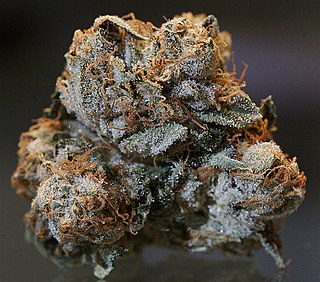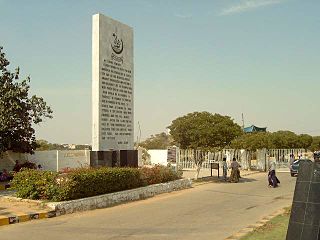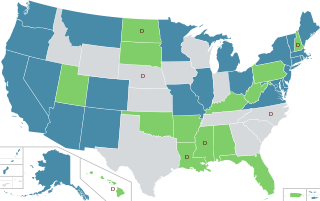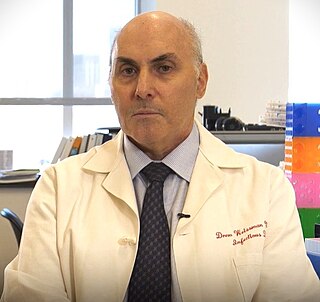The Multidisciplinary Association for Psychedelic Studies (MAPS) is an American nonprofit organization working to raise awareness and understanding of psychedelic substances. MAPS was founded in 1986 by Rick Doblin and is now based in San Jose, California.

Cannabis, also known as marijuana or weed among other names, is a psychoactive drug from the cannabis plant. Native to Central or South Asia, the cannabis plant has been used as a drug for both recreational and entheogenic purposes and in various traditional medicines for centuries. Tetrahydrocannabinol (THC) is the main psychoactive component of cannabis, which is one of the 483 known compounds in the plant, including at least 65 other cannabinoids, such as cannabidiol (CBD). Cannabis can be used by smoking, vaporizing, within food, or as an extract.

Kush generally refers to a pure or hybrid Cannabis indica strain. Pure C. indica strains include Afghan Kush, Hindu Kush, Green Kush, and Purple Kush. Hybrid strains of C. indica include Blueberry Kush and Golden Jamaican Kush. The term "kush" is now also used as a slang word for cannabis.

The International Center for Chemical and Biological Sciences (ICCBS), also known as the Hussain Ebrahim Jamal Research Institute of Chemistry and Dr Panjwani for Molecular Medicine and Drug Research, is a federally funded national research institute and national laboratory site managed by the University of Karachi for the Higher Education Commission (HEC) of the Government of Pakistan.

In the United States, increased restrictions and labeling of cannabis as a poison began in many states from 1906 onward, and outright prohibitions began in the 1920s. By the mid-1930s cannabis was regulated as a drug in every state, including 35 states that adopted the Uniform State Narcotic Drug Act. The first national regulation was the Marihuana Tax Act of 1937.
Geoffrey William Guy is a British pharmacologist, physician, businessman and academic, who co-founded GW Pharmaceuticals and has developed treatments using compounds found in cannabis, which are the first cannabis-based medicines approved by and available on the British National Health Service (NHS).

Marijuana, or marihuana, is a name for the cannabis plant, and more specifically, a drug preparation from it. "Marijuana" as a term varies in usage, definition and legal application around the world. Some jurisdictions define "marijuana" as the whole cannabis plant or any part of it, while others refer to "marijuana" as a portion of the cannabis plant that contains high levels of tetrahydrocannabinol (THC). Some jurisdictions recognize "marijuana" as a distinctive strain of cannabis, the other being hemp. For legal, research and statistical reference, "marijuana" generally refers to only the dried leaves and flowering tops, with by-products such as hashish or hash oil being uniquely defined and regulated. The form "marihuana" is first attested in Mexican Spanish; it then spread to other varieties of Spanish and to English, French, and other languages.

The use, sale, and possession of cannabis containing over 0.3% THC by dry weight in the United States, despite laws in many states permitting it under various circumstances, is illegal under federal law. As a Schedule I drug under the federal Controlled Substances Act (CSA) of 1970, cannabis containing over 0.3% THC by dry weight is considered to have "no accepted medical use" and a high potential for abuse and physical or psychological dependence. Cannabis use is illegal for any reason, with the exception of FDA-approved research programs. However, individual states have enacted legislation permitting exemptions for various uses, including medical, industrial, and recreational use.

In the United States, the use of cannabis for medical purposes is legal in 38 states, four out of five permanently inhabited U.S. territories, and the District of Columbia, as of March 2023. Ten other states have more restrictive laws limiting THC content, for the purpose of allowing access to products that are rich in cannabidiol (CBD), a non-psychoactive component of cannabis. There is significant variation in medical cannabis laws from state to state, including how it is produced and distributed, how it can be consumed, and what medical conditions it can be used for.
Seymour Lester Shapiro was an organic chemist best known for his pioneering work on a class of drugs used to treat symptoms of adult-onset diabetes. Phenformin was marketed under the name "DBI" until it was taken off the market after being linked to increased incidence of lactic acidosis, a potentially fatal condition.

Lumír Ondřej Hanuš is a Czech analytic chemist and leading authority in the field of cannabis research. In 1992, he and William Anthony Devane isolated and first described the structure of anandamide, an endogenous cannabinoid neurotransmitter.
The history of medicinal cannabis goes back to the ancient times. Ancient physicians in many parts of the world mixed cannabis into medicines to treat pain and other ailments. In the 19th century, cannabis was introduced for therapeutic use in Western Medicine. Since then, there have been several advancements in how the drug is administered. Initially, cannabis was reduced to a powder and mixed with wine for administration. In the 1970s, synthetic THC was created to be administered as the drug Marinol in a capsule. However, the main mode of administration for cannabis is smoking because its effects are almost immediate when the smoke is inhaled. Between 1996 and 1999, eight U.S. states supported cannabis prescriptions opposing policies of the federal government. Most people who are prescribed marijuana for medical purposes use it to alleviate severe pain.

Cannabis dispensaries in the United States or marijuana dispensaries are a type of cannabis retail outlet, local government-regulated physical location, typically inside a retail storefront or office building, in which a person can purchase cannabis and cannabis-related items for medical or recreational use.

Harkishan Singh was Professor Emeritus at the Panjab University. He was a well recognized pharmaceutical academic, medicinal chemistry researcher and science historian. He had more than half a century experience in his respective fields to his credit. He worked at the Banaras Hindu University, University of Saugar, and the Panjab University in India, and abroad at the University of Maryland, University of Mississippi and the University of London.
Medical cannabis research includes any medical research on using cannabis. Different countries conduct and respond to medical cannabis research in different ways.
Cannabis product testing is a form of product testing analyzes the quality of cannabis extracts, edibles, and THC and CBD levels in an emergent consumer market eager to sell adult use products. Analytical chemistry and microbiology laboratories are important entities in consumer protection. These labs not only determine the condition and viability of cannabinoids, water content, heavy metals, pesticides, terpenes, yeast, but also the presence of mold, mycotoxins, and solvents. These laboratories emerged when advocates of cannabis testing raised concerns about potential contaminants.
Alexandros Makriyannis is an American biochemist and professor of chemistry and chemical biology in the department of medicinal chemistry at Northeastern University in Boston, Massachusetts, where he directs the Center for Drug Discovery and holds the George Behrakis Chair of Pharmaceutical Biotechnology. His research has focused on the biochemical basis of the endocannabinoid system and on the development of synthetic cannabinoids.

Cannabigerolic acid (CBGA) is the acidic form of cannabigerol (CBG). It is a dihydroxybenzoic acid and olivetolic acid in which the hydrogen at position 3 is substituted by a geranyl group. It is a biosynthetic precursor to Delta-9-tetrahydrocannabinol, which is the principal psychoactive constituent of the Cannabis plant. It is also a meroterpenoid, a member of resorcinols and a phytocannabinoid. It derives from an olivetolic acid. It is a conjugate acid of a cannabigerolate.

Drew Weissman is an American physician and immunologist known for his contributions to RNA biology. Weissman is the inaugural Roberts Family Professor in Vaccine Research, director of the Penn Institute for RNA Innovation, and professor of medicine at the Perelman School of Medicine at the University of Pennsylvania (Penn).

PDC-APB, or 3-pentadecyl-1,2-phenylene bis(4- butanoate), is a drug candidate under evaluation to determine if it might protect against contact dermatitis caused by urishiol from poison ivy, poison oak, and poison sumac.












